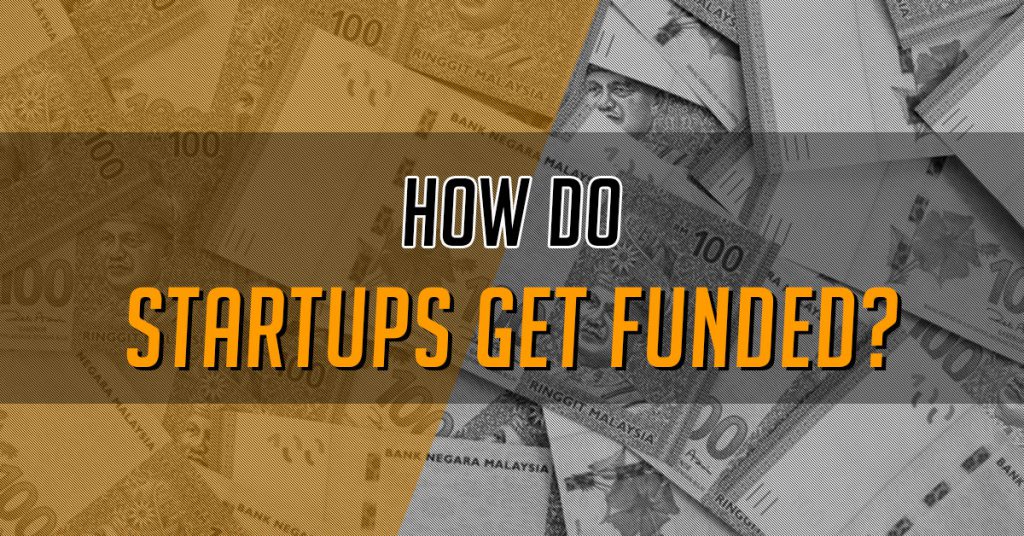- There are various ways in which a startup can obtain funds, but one of the most sought after means of funding involves venture capitalism and equity funding.
- Funding acquired through venture capitalism and equity funding has various stages, each with its own set of players and levels of interest.
- We explain what each of these stages/rounds necessitate, ranging from seed rounds all the way to Series C.
A business doesn’t grow with money in the same way a child doesn’t grow without food. Today’s global business landscape is littered all over with startups trying their level best to make it big.
Be it a tech venture, a social enterprise, or an F&B business with a quirk, all fledgling startups will at some stage of their growth require funding from an outside party, unless the founder or partners have other sources of wealth available or, if bootstrapping for the long haul is an option.
For first-time or newer entrepreneurs, understanding how funding works and where to get it is vital.
For those interested, we’ve put together an informal guide to how Malaysian startups can obtain funding, and what their options are.
Note: Even though accelerators and incubators are also a viable source of funding, we will exclude them from this article and instead exclusively focus on venture and equity-based funding.
1. What is seed funding and when do I get it?
The name speaks for itself. Your startup is still young and small, you have no real Minimum Viable Product (MVP) and you need seeds that you can plant to grow your startup to something bigger.
At this point, the realistic options involve investors who are investing in you and your idea, rather than your company itself.
Usually, seed funding is sought after by startup owners for the purpose of using it to perform market research, create a prototype, and hire a larger team to help build the business.
In this round of funding, the money usually comes through angel investors (individuals who have a sizeable income and money to spend) and early stage venture capitalists (VCs; they invest in companies because of the possibilities of massive returns). Do note there is no hard and fast rule for what shape or form an investor can come in.
So what’s the difference?
Typically, angel investors are individuals (sometimes family members or friends) who fork out money from their own pockets and will be able to invest amounts ranging from US$10,000 to US$100,000. The trend today also sees angel investors working in groups called angel investor networks that can see amounts reach US$1 million.
These amounts aren’t set in stone, and can differ depending on the type of product, market, and reputation of your startup.
On the other hand, VCs usually come in the form of corporations. Funding is often done with multiple investor groups involved in a single round. In seed rounds, smaller VCs—known as early stage VCs—feature more heavily than the bigger and more traditional VCs (which we’ll see more of later on).
Examples of investors who deal in seed funding:
- Nexea Angels (Malaysia) – Angel Investor network
- BizAngel (Malaysia) – Angel Investor network
- 500 Startups (Malaysia) – Venture Capital firm
- Cradle Fund (Malaysia) – Government-owned equity funding
Examples of Malaysian companies that have received seed funding within the past two years:
2. When exactly can I go for Series A?
So after your startup has gained some traction following a period of market research and product development, you feel that you are prepared to give away more of your company in exchange for more money, and that the time is right for further funding. This is when your startup goes through the next round of funding called Series A.
In Series A, funding is usually acquired for the purpose of scaling, increasing brand visibility, and the distribution of your product or service.
At this point, the objective is to develop a business model that can last the distance, and should include plans to expand your brand to wider markets.

The amount of funding in this round increases significantly from what you can obtain in seed funding, ranging anywhere from US$2 million all the way to US$10 million (again these amounts are just estimates, and can differ from case to case).
In this round, players include less angel investors (although some still linger about) and more early stage VCs and traditional later stage VCs.
In contrast with early stage VCs, the more established later stage VCs are comprised of corporations who invest heavily in many other projects—many of them in international markets—and are more likely to invest in startups with a proven track record and a solid growth trajectory.
Examples of investors who deal in Series A funding:
- Netrove Partners (Malaysia) – Venture Capital firm
- Expara Ventures (Singapore) – Venture Capital firm
- Cradle Seed Ventures (Malaysia) – Venture Capital firm partnered with Cradle Fund
Examples of Malaysian companies that have received Series A funding within the past two years:
3. Does Series B just mean I can get more money?
If you’re looking at funding within the stages of Series B, this means that your startup has gone past the development stage and is looking to grow further by actually expanding to markets that you have already identified and researched.
At this point, your product or service is perfected and the challenge now lies in making it more widely accessible.
Funds obtained in this round will go towards building the team, developing the brand through marketing, increasing R&D, and improving customer support among other things. Expect amounts that easily go upward of US$20 million.

Similar to Series A funding, investors in this round will be mostly comprised of VCs, with a more prominent showing of late stage specialists. These players now know what your business is all about—your company poses less risk due to its stability and they can trust you to lead them to a profitable exit when the time comes.
Examples of investors who deal in Series B funding:
- Elixir Capital (USA) – Venture Capital firm
- Incubate Fund (Japan) – Venture Capital firm
Examples of a notable Malaysian startup who received Series B funding:
4. Am I even a startup anymore if I go for Series C?
At this stage, your business is no longer a “startup” in most senses of the word. Rather, your company is hugely profitable and possibly an industry leader. Now, you want to grow by taking your brand to even greater heights by developing new product lines or even acquiring other businesses.

This is where Series C funding comes into play. You give up even more of your company, but funds raised at this stage can sometimes hit six figures, and the investors at this stage can include late stage multinational VCs, hedge funds, and investment banks.
Examples of investors who deal in Series C funding:
- Sequioa Capital (USA) – Venture Capital firm
- Vertex Holdings (Singapore) – Venture Capital firm
- MAVCAP (Malaysia) – Venture Capital firm
An example of a Malaysian company that has received Series C funding recently:
5. Can I go all the way to Series Z or do I have other choices?
Following all the previous stages of funding, you as a business owner can either choose to remain private or go public.
Should your business choose to remain private, you can opt to receive further financial backing through funding rounds such as Series D, E, F and so on (there isn’t really a limit to how many funding rounds a startup can go through, as long as there are willing investors).
The reasons for these continued rounds of funding could range from simply needing more money to achieve a fiscal target before going public, or even to recover from a financial setback.
But eventually, investors who have pumped their digits into your company will want a return on their investment, and this is where plans for your company’s IPO come into view.
Going public entails plenty of other factors, parties, and business nuances, that would require a whole other piece (or book). But for now, we hope that this guide has helped you understand how funding works, and what you can expect from the various rounds of funding, should you ever need the money to grow your own startup.
Also Read: Honda M’sia Is Giving Rebates Up To RM8,888 For CNY—Here’s How To Get Them










